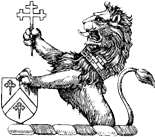The Significance of the Assumption
Mary shows the more noble status to which humanity has been elevated by Redemption in Christ
The Solemnity of the Assumption is these days an underappreciated and undervalued holy day. Indeed, next year it won’t even be a feast of precept (a holy day of obligation) because of the American bishops’ “Saturday-or-Monday-get-out-of-Church-free-on-certain-holy-days” rule.
The Assumption stands in a straight line from Easter to the Ascension (another sidelined holy day) to the Last Judgment. None of this would be of any value or sense absent Christ’s Resurrection, which makes clear death — “the last enemy” — is vanquished. The redemption Christ won for us extends to the whole person, body and soul, as was first evident in Christ’s Ascension. It is absolutely evident in Mary’s Assumption. Mary’s “falling asleep” — however she experienced her passage from this world to the next — is proof that death as we know and experience it is a consequence of sin to which Mary was not subject and also that the salvation of the whole person, body and soul, begun in Christ and promised to us is already a fact in the Blessed Virgin Mary. These truths are why we profess every Sunday our faith in “the resurrection of the body,” not merely the “eternal life of the soul.” That is why the Preface for Mass today speaks of Mary as “the beginning and image of your Church’s coming to perfection,” the consummate prefiguring of what we are all called, according to our measure of God’s grace, to be.
Even chronologically, it makes sense: from Easter and Ascension in spring to Mary’s Assumption in summer to the Gospels of the Last Judgment on the final Sunday of Ordinary Time, all these show the unity and continuity of Catholic doctrine. These are not just “days you have to go to Church” or disconnected ideas. They are part of the skein of Catholic belief.
I especially insist on the relevance of the Assumption to healthy theological anthropology. If Jesus “fully reveals man to himself” (Redemptor hominis, 8), then so does Mary. As a full and “only” human being, she shows us what a human being without sin should be like and, as our Mother, supports us spiritually on that journey. Bearing that in mind, the idea of Mary as “first disciple” acquires a special richness. She is not just a pretty example of humility and obedience, but she in fact shows humanity what human life should have looked like and the even more noble status to which it has been elevated by Redemption in Christ (in which she herself shared).
Let us then not undervalue this great feast.
From The Narthex
In July, a grisly video made the evening news. The video—apparently real—shows a Ukrainian prisoner…
Given the news cycle, the document Human Fraternity—issued by Pope Francis and Ahmad Al-Tayyeb, the…
June 7, 2022: Save the date! Truth be told, I don’t save most dates. This…

